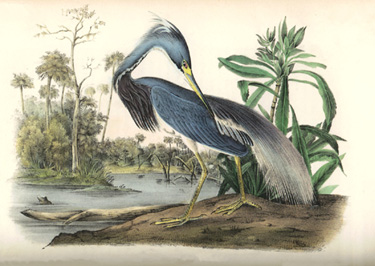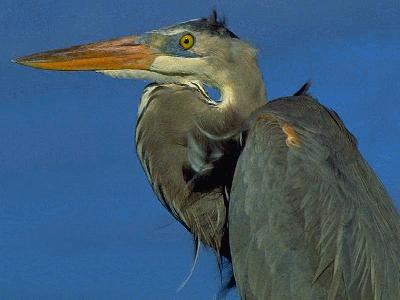The Blue Heron



|
You may wonder why I chose the Blue Heron as the symbol for my practice. In Chinese tradition, long-necked birds such as cranes, egrets, and herons represent longevity and good fortune. I chose the Blue Heron over cranes or egrets because of the heron's beauty and majestic stature. Please read on for more information about these wonderful birds. The great blue heron is one of the most magnificent water birds in the world. The drawing at the top of this page (and in the background of this page) is John James Audubon's beautiful drawing of this bird. The photos you see here were retrieved from various places around the net. A great place to start looking for pictures of these birds, if you are interested, is Google's image search. The Encylopedia Britannica says, "Herons are widely distributed over the world, but are commonest in the tropics. They usually feed while wading quietly in shallow water (as in pools, marshes, and swamps), catching frogs, fishes, and other aquatic animals. They nest in bushes or trees near water; the nests usually are grouped in colonies called heronries. "Herons commonly stand with the neck bent in an S shape. They fly with the legs trailing loosely and the head held back against the body, instead of stretching the neck out in front as most birds do. They have broad long straight sharp-pointed bills, and powder downs, areas of feathers that continually disintegrate to a fine powder used for preening (absorbing and removing fish oil, scum, and slime from the plumage).
"Typical herons feed during the day. In breeding season they develop
showy plumes on the back and participate in elaborate mutual-courtship
posturing. Best known of the typical herons are the very large,
long-legged and long-necked, plain-hued members of the genus Ardea
|

|

|